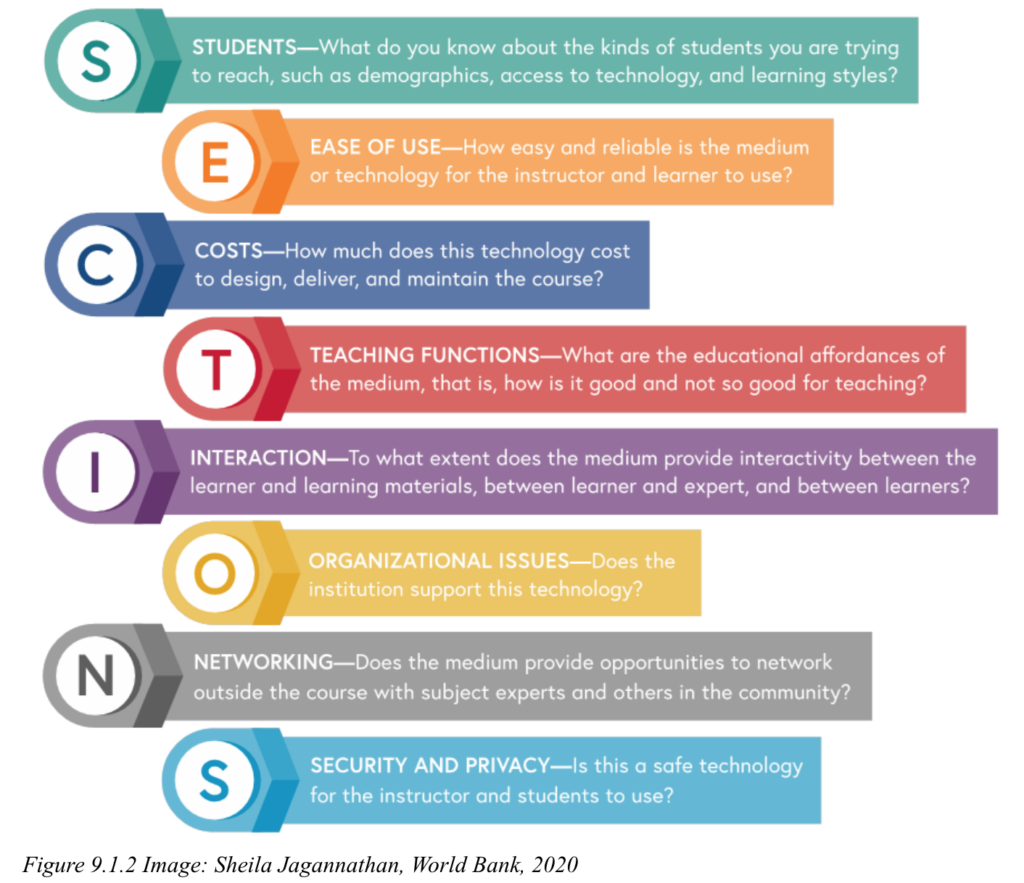How Do We Evaluate Multimedia and Multimedia Tools?
Let’s Describe differences between TPACK, SAMR and SECTIONS
What is TPACK?
Technological Pedagogical Content Knowledge (TPACK) is the effectiveness of the delivery of the lesson with technology integration. It is an ideal application in all aspects of learning, which are all important in the teaching and learning process. TPACK is an emergent form of knowledge that goes beyond all three “core” components (content, pedagogy, and technology). Technological pedagogical content knowledge is an understanding that emerges from interactions among content, pedagogy, and technology knowledge. The TPACK framework builds on Shulman’s (1987, 1986) descriptions of PCK to describe how teachers’ understanding of educational technologies and PCK interact with one another to produce effective teaching with technology.
What is the SAMR Model?
SAMR Model is a framework created by Dr. Ruben Puentedura that categorizes four different degrees of classroom technology integration. The letters “SAMR” stand for Substitution, Augmentation, Modification, and Redefinition. The SAMR model was created to share a common language across disciplines as teachers strive to personalize learning and help students visualise complex concepts. The SAMR Model can be especially powerful during remote and blended learning when integrated classroom technology makes teaching and learning a more seamless experience for educators and students.
In the video below ⬇️ we explore key differences between TPACK and SAMR Model
What is the SECTIONS Model?

SECTIONS Model is an applicable framework that educators can use to evaluate the effectiveness of applying a certain technology in their classrooms. SECTIONS specifically refers to 8 different areas: Students, Ease of use, Costs, Teaching & Media, Interactivity, Organizational issues, Networking and Security & Privacy. Using the SECTIONS MODEL by Bates and Poole, can help guide the instructor since it was designed to “facilitate decisions with regard to choice of technology at both the strategic and the tactical level, and also to help decide within a particular technology the most appropriate balance between different media” (Bates & Poole,2003, p.79-80).
References:
- Bloom, A. (1987). The closing of the American mind: How higher education has failed democracy and impoverished the souls of today’s students. New York: Simon and Schuster.
- Bruce, B. C., & Hogan, M. C. (1998). The disappearance of technology: Toward an ecological model of literacy. In D. Reinking, M. McKenna, L. Labbo, & R. Kieffer (Eds.), Handbook of literacy and technology: Transformations in a post-typographic world(pp. 269–281). Hillsdale, NJ: Erlbaum.
- Leinhardt, G., & Greeno, J.G. (1986). The cognitive skill of teaching. Journal of Educational Psychology, 78(2), 75–95.
- https://www.sciencedirect.com/science/article/pii/S2590291121000061
- https://lidtfoundations.pressbooks.com/chapter/tpack/
- https://www.powerschool.com/blog/samr-model-a-practical-guide-for-k-12-classroom-technology-integration/
- https://www.3plearning.com/blog/connectingsamrmodel/
- https://link.springer.com/article/10.1007/s10639-021-10514-2
